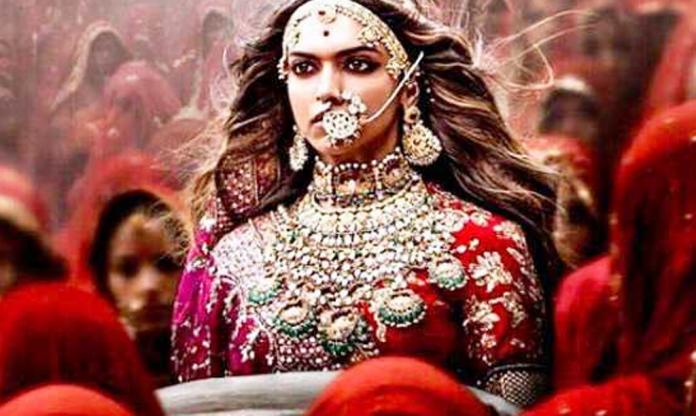By Ram Puniyani
Nearly an year ago multiple rowdy protests took place when the film Padmavati was being shot in Rajasthan. Sanjay Leela Bhansali had to interrupt the shooting for some time. Currently again, more intense opposition has been witnessed as the film was due to be released. On the basis of its trailer, the Karni Sena threatened that film should not be released. Crores of rupees were on offer from BJP leaders for cutting the nose of Deepika Padukone, the one doing the role of Padmavati and for the head of Bhansali, the director of the film. Bhansali was also interrogated by the Parliamentary committee.
The assertion from Karni Sena was that the film distorts history and is an insult to Rajput honor. An intense intolerance to the artistic freedom of the director has been on display, with state looking the other way around, in a way giving silent support to the violence and attempt to suppress the freedom of expression. The Chief Ministers of five BJP ruled states have already proclaimed the film will not be released in their states and one of the Congress Chief Ministers also talked against the film.
What is the story line of the film? Mostly the story is drawn from the classic Novel of Malik Muhammad Jayasi, modified as per the film makers. Jayasi in his novel tells the story of Allauddin Khilji, the 13-14 century ruler of Delhi. As per this fictional tale he is smitten by the immense beauty of Padmavati, attacks Chittor to get her. As he lays the siege of Chittor, Padmavati along with many valiant Rajput women commit Jauhar (self immolation) and kill them depriving Khilji from getting Padmavati.
The objectionable part of the film for Karni Sena-BJP types is probable dream sequence of romance between Khilji and Padmavati. The film makers are denying such a sequence. As such Jayasi’s narrative is a metaphor for the futility of power and aspiration of the soul for liberation. Historians like Rajat Datta tell us that Padmvati or Padmini is not a historical character. Khilji did lay the siege of Chittor in 1303. Novel Padmavat was written in 1540, over two centuries later. The books which were written between these two periods do not mention Padmavati at all. After Padmavat appeared many bards picked up this tale and made it a part of popular folklore. Its further and communal distortion took place after the British ethnography-historiography began and aimed at the demonizing the Muslim rulers. While bards accounts underplayed the Muslim aspect, Todd’s Annals ( Annals and Antiquities Rajasthan (1829), transformed it and gave the narration an anti- Muslim, anti Khilji slant. This is an insertion into the history, which has come to life over a period of time.
Currently the incidents of Rajput women and Muslim men have two major types of presentations. One is that which shows the velour of the Rajput women, committing self immolation rather than relating to the Muslim kings. The other one is where the interaction and alliance of Muslim rulers and Rajput families are at the core and intermarriage is the part of the relationship. Over a period of time the understanding is being promoted that the ‘giving away’ daughters to Muslims was a surrender, weakness of Rajputs. This latter falls into the category of ‘our women’ being given away to the ‘others’; its’ a patriarchal presentation of events, which is interpreted as a matter of shame for Rajputs! The way at looking at the obverse like film Bajirao Mastani is totally different from this.
While film is yet to be seen in full what one can glean from the trailer of the film is that that Khilji is shown to be cruel; barbaric person, unkempt, attacking food for example. His army is carrying a flag looking like that of Pakistan. The present stereotypes about Muslims seem to be embodied in Khilji. This creation of ‘Muslim as evil’ has roots in the intervention of British accounts. British colonial powers followed the policy of ‘divide and rule’.
The British officers/Historians followed their masters and gave a tilt to the events where the image of Muslim kings was tarnished. Kings have their own characteristics and religion is not the only marker for their nature and character. Kings cutting across religions had traits which can be attributed to their power. They also had their specificities. The historical accounts don’t present an out of the way cruelty of Khilji. What is recorded is that he expanded the Delhi rule and fought against the Mongols, and saved the Delhi Empire from their invasion.
With time and growing intolerance these types of films are getting a more hostile reception. We first had Mughal-E- Azam, one among the great films from India, a fiction nevertheless, where Jodha bai, a Rajput princess is married to Akbar. The reception of the film was extraordinarily positive, the alliance was not questioned. This was few decades earlier when the communalization of society was not so intense. Few years ago we had Jodha Akbar on the same theme. This time around there were some protests but film did carry on.
Now with Padmavati the protests are horrific. History has been distorted here for sure, but what part of history and which way? Padmavati is a fictional reality, how it has been depicted needs to be seen. But the fear of a Hindu girl romancing a Muslim is what is agitating the Sena’s and the CMs of BJP ruled states in particular. Here surely the film distorts Khilji, presenting him as an embodiment of the currently prevalent negative perceptions about Muslims. Still film makers can have their own liberty and film must be seen, appreciated and criticized on the grounds of its strengths and weaknesses. What stands out is the fictional Padmavati coming to haunt as a real character, and Khilji being painted in the biases of present reflected on the past.


